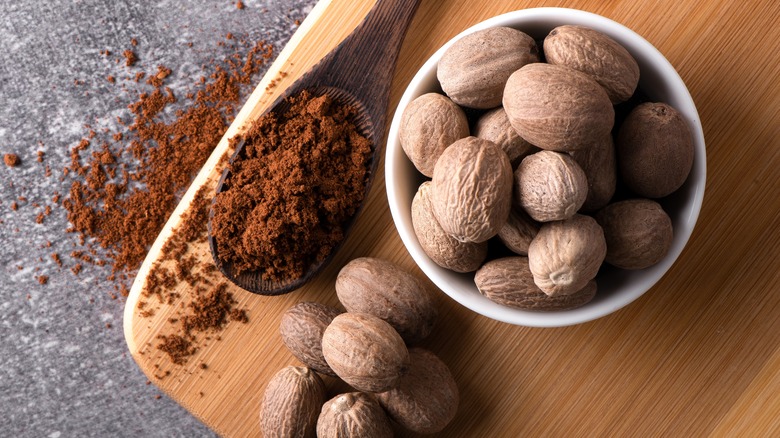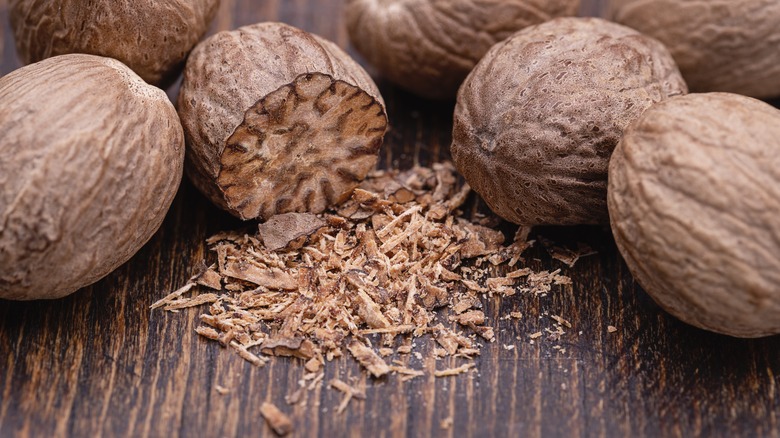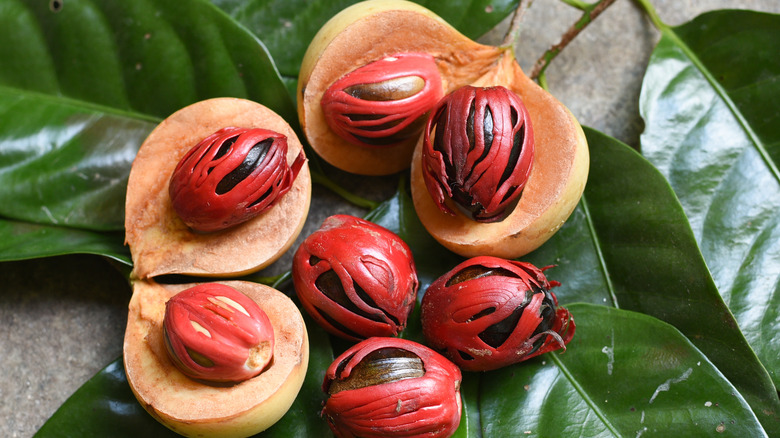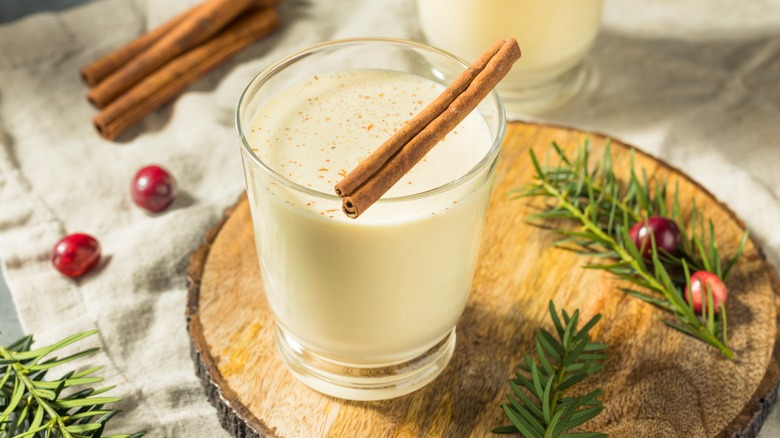Most Of The World's Nutmeg Comes From This Country
Spices make the world go round, literally. According to Statista, America's herb and spice revenue increased to $9.27 billion in 2021 and is expected to continue rising if only to make our dishes taste that much yummier. Without the power of spices, restaurants would fall out of business, our homes wouldn't smell near as good during holidays, and we wouldn't have some of our favorite recipes like spicy egg curry, smoky chicken chili, or tteokbokki.
There are just some spices that are essential to have in your pantry like chili powder, or cinnamon, but one that should never be overlooked is nutmeg. While most of us are familiar with nutmeg as a powder, ground up into a little container, we probably couldn't recognize it in its whole form. The nutmeg we fold into our cinnamon rolls or mix into our creamy coquito recipe comes from the seed of a tropical evergreen tree, Myristica, native to Indonesia (via National Geographic).
Who produces the most nutmeg?
Since the seed is native to the country, it makes sense that Indonesia is where nutmeg thrives the best. According to the statistics recorded by the United Nations' Food and Agriculture Organization, in 2020 Indonesia produced a whopping 42,338 tons of nutmeg. Indonesia is closely followed by India which produced 41,000 tons. Nutmegs are exported globally to the European Union, Asia, and the Americas with Indonesia's major importers being the Netherlands, Germany, Vietnam, China, India, Japan, and the U.S. (via Australasian Agribusiness Perspectives 2021).
Nutmeg harvesting is a kind of two-in-one deal in Indonesia. The Myristica, while it takes a long time to come to fruit, Ultra International B.V. says that the tree eventually produces a hard-shelled nut with a red mace covering it. This mace is harvested and turned into oil and spice while the nut (the nutmeg) is ground separately. The fruit will ripen on the tree and will eventually split open revealing the mace and seed which is when they are harvested.
Who exports the most nutmeg?
There has been a shift in the nutmeg market over the last decade. World Atlas reports that as recently as 2016 and in the years following, India was the leading exporter globally, earning $107 million, however, India did not produce enough nutmeg at the time to meet their local demand and imported quite a bit of their product from Indonesia. And though they were exporting more nutmeg than Indonesia, the islands were actually producing significantly more of the spice that the mainland country.
Today, times have changed, Indonesia is still the crowning champion of nutmeg production, but India is no longer the world's largest exporter, that title must also go to Indonesia (via Tridge). According to the World Integrated Trade Solution, in 2019 Indonesia exported 16,558,800 kilograms worldwide while India only shipped out 2,489,870 kilograms. This trend continued through 2020 and 2021 as the Observatory of Economic Complexity reports that India is consistently coming in second place in nutmeg exports though their biggest buyers are the United Arab Emirates, America, Nigeria, Egypt, and Thailand.
History of nutmeg
Nutmeg is popularly used in all kinds of things ranging from baked goods to sausages. A spice that works well with both sweet and savory dishes, we rely on it for hearty eggnog and a scrumptious pumpkin pie. But though almost every country in the world uses nutmeg these days, it was once only found in one part of the world. International Centre for Education and Training claims that the nutmeg tree originates on the Banda Islands in Maluku Province, Indonesia.
When the Portuguese colonized the area in 1512, they fell upon the nutmeg tree and they, as well as the Dutch, began to cultivate it. According to Science Direct, the nutmeg was used by the Indians to aid digestion and by the Egyptians to embalm. When the Italians got hold of the stuff they believed it cured the plague. It seemed that while we regard nutmeg as a simple flavor additive today, our ancestors preferred it for its medicinal properties.



